Album cover
Album cover
Album cover
Emily Lee
Cinemagraphs
A cinemagraph consists of a subtle feature in an image set in perpetual motion whilst the rest of the image remains still. This can act as a deception, leading the viewer to believe that they are watching an animation.
This hybrid of photography and video was first created in early 2011 by Jamie Beck and Kevin Burg after a series of experiments using pre-existing video footage. However the term cinemagraphs was not coined until March of the same year when Beck and Burg began capturing components explicitly for their creation, thus instigating a new medium. Cinemagraphs were produced in response to the desire of Beck and Burg to capture a ‘living moment’ within the pair’s fashion photography.

"Young love" by Jamie Beck - 2012
Inspiration
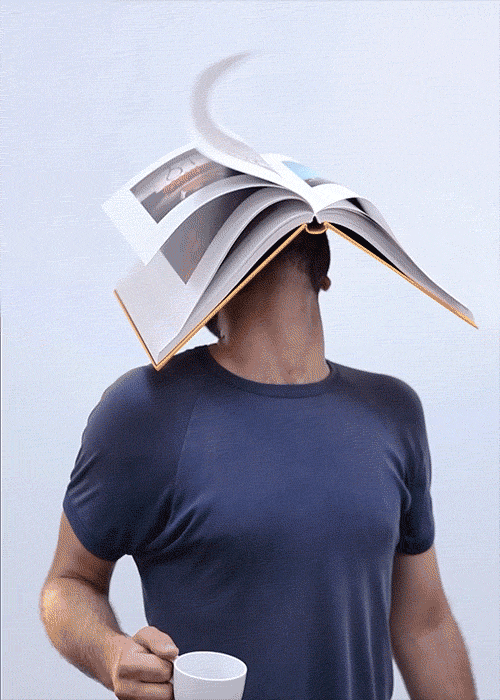
Untitled by Romain Laurent - n.d.
This cinemagraph by Romain Laurent shows a man stood, head tilted back, with a book balanced over his face, the pages flapping from one side to the other. The way in which the pages move are characteristic of being blown by the wind and thus we are able to relate the motion to what we know two happen in the presence of wind. And yet the rest of the image remains dead still, untouched by this wind that we know should be rippling through the model's shirt and beginning to tip the book from his face, thus a sense of confusion is created.
By holding a mug, we assume that the man was drinking some form of hot drink - tea perhaps -and hence he is performing what we would see as a normal action. However the man's face is obscured by an open book - an abnormal feature in what may have been an ordinary situation. As this is a cinemagraph, the pages of the book are moving, adding further abnormality to the familiar image, therefore producing a juxtaposition of ordinary and extraordinary.
From our observation of the wind as a factor in this piece, we might assume that the footage was either captured outside or in a studio set up using some form of fan. I predict the former due to the way in which the light falls across the model's body. There are no harsh shadows and the overall image is slightly cooler, both factors suggesting that the natural light was diffused by a thick layer of clouds, which would hence have made the temperature cooler on the whole.
There is some slight grain evident within the image, suggesting that a slightly higher ISO was used. There also appears to be some slight chromatic aberration around the edges of the man's shirt, produced by the addition of sharpening in the editing process.
However overall this cinemagraph shows an effective contrast between reality and fantasy. The seamless loop of the turning pages makes the image entrancing, almost hypnotic and therefore is incredibly engaging. I hope to produce a cinemagraph as flawless as this, incorporating a similar sense of disruption of the ordinary to engage the viewer and produce an atmosphere of disorientation.
This cinemagraph is a more obvious nod toward surrealism, with the use of reflection producing an impossible landscape that befuddles the viewer.
In the footage, the cars' headlights are all on, allowing them to be better seen in the cinemagraph. The car lights also tell us the time of day that this was shot - early evening - and thus gives us an idea of the camera settings used. The majority of the scene is in focus, implying a high F-stop, and as we know that this was taken at a lower light level we can tell that the ISO must have been relatively high in order to expose the footage correctly.
Despite the high ISO, the image does not appear grainy at all, suggesting that the camera used was incredibly high resolution. However some parts of the image seem almost overly smooth, thus indicating that the clarity has been reduced in post production and it is also likely that some noise reduction has been added to the same effect.
The addition of the reflection here is an effective reinforcement of the leading lines of the road, drawing the viewer's eyes to the vanishing point at the centre. This focal point turns the image into almost an optical illusion with the help if the moving parts making the roads seem to extend past the viewer's eyes, past the boundaries of the crop.
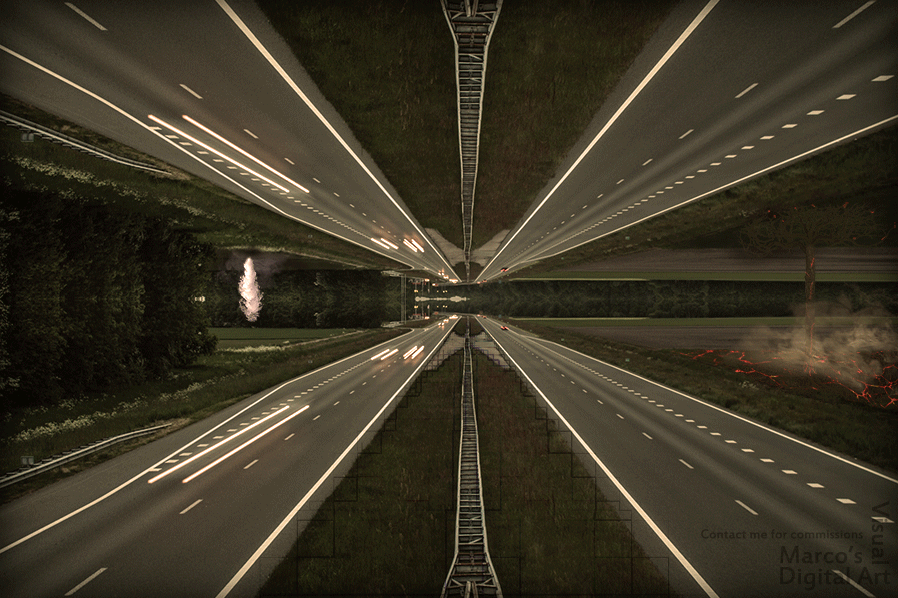
'Surreal roads' by Marcodaz - n.d.
Another gesture of surrealism is what lies off to the sides of the road. On the left appears to be relatively ordinary, with a series of bushes, yet on the right sits a steaming expanse of magma. Quite ostensibly this is not a common occurrence. However when we compare this side to the other, we could perhaps draw a contrast between the two as representatives of heaven and hell. The bushes and what appears to be a water fountain in reverse on the left provides a peaceful atmosphere, juxtaposing the more unpleasant atmosphere on the right. It could then possibly be interpreted that the road running through the centre is symbolic of life - the high abundance of fast moving vehicles embodying the chaos and the reflection showing the confusion associated with life.
In my own cinemagraph I hope to include symbolism to enhance my surrealistic approach and add more meaning to my work.
How to make a cinemagraph
-
Import your footage into photoshop (ensuring it is in motion mode)
-
Find the section of footage you want to use
-
Move the sliders in from the front and back to isolate the section you want to use
-
Click on the settings icon and set it to loop playback
-
Duplicate the footage
-
Move the start of the duplicate footage to the end of the first layer (so the footage will loop back to the start)
-
Extend the second layer backwards (the section you trimmed earlier)
-
Place one keyframe at the middle of the first layer and another at the end
-
Set the opacity at the first keyframe at 100% and 0% at the second (this will fade out the top layer, exposing the second layer beneath it)
-
Duplicate the footage into a new still layer (shift - alt - command - E) and place it above the two video groups
-
Add a layer mask to the new layer and paint out the area over the moving part to show the video footage beneath it
-
When you are happy with your cinemagraph go to: File > Export > Save for web
-
Ensure that the file format is set to GIF and the looping option is set to 'forever', then adjust the image size to create a file size of your choice (smaller file sizes will run better)
Test
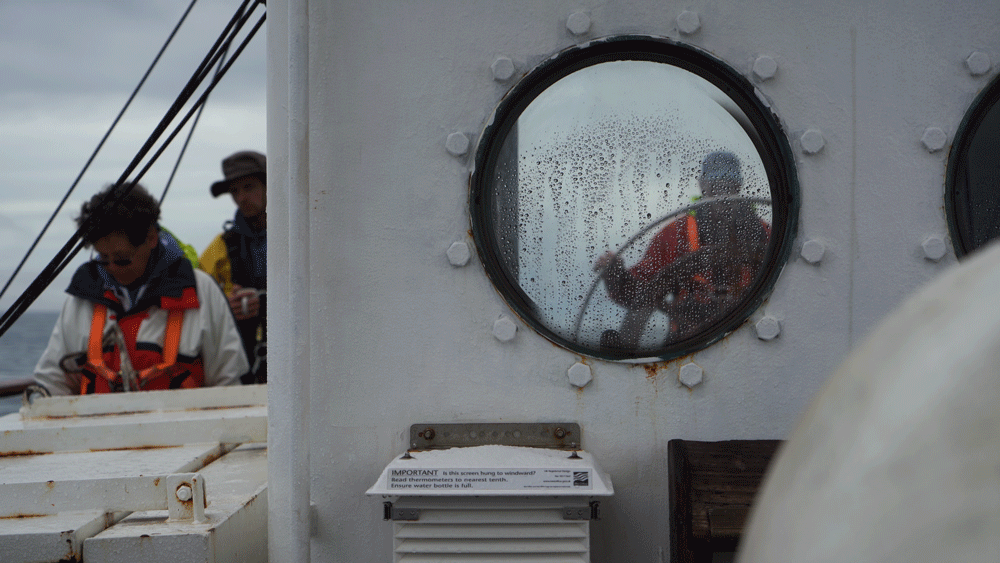
Before I conducted a serious shoot, I tested the theory of producing a cinemagraph with some footage I had taken from a few weeks previously.
Upon this test I discovered the importance of using a tripod when filming as my moving part moved far too much, not fitting at all with the rest of the image.
For my actual shoot, I will ensure that I use a tripod to make the viewpoint stationary.

First shoot

My plan for this shoot was to incorporate both a sense of mystery and confusion past the normal emotive response to a cinemagraph, thus introducing a further element of surrealism. Though it could perhaps be said that a cinemagraph is an example of surrealism in its own right, I intended to take this a step further.
For my cinemagraph, I intended to produce a film noir-esque scene, i.e. a black and white image of a model staring at the rain through a window. However to add an element of surrealism, my plan was to play the footage in reverse so that the rain appeared to be flowing backward.
Unfortunately there was an absence of rain when I conducted my shoot and therefore I had to produce my own. I consequently placed an assistant on a ladder with a watering can to pour water outside of the window. This water was illuminated by a continuous light source so that the water would refract the light and thus would be picked up more easily by the camera. I also used a continuous light indoors to light my model, but I don't feel that this was enough to proper illuminate her face.
Settings wise, I used a low ISO of 125 and an aperture of 18 to darken my image down as a result of the bright natural light. I needed to be able to overpower the ambient lighting to effectively use my studio lights, however this proved almost impossible due to the weak power of my continuous lights in comparison to the extreme brightness of the natural light.
I first took my footage into iMovie to reverse it. Next, following the steps previously listed to produce my cinemagraph, I found the section of footage that I wanted to use for my work and worked around that. I would have liked to use a slightly longer loop so that the water droplets flowing up the window roll through the entire shot rather than disappearing midway across but unfortunately my artificial rain cut out and thus there would be even less continuity in my cinemagraph.
After creating my infinite video loop, I then imposed the still over the top of the footage and, using layer masks, I painted the reverse rain back into the image thus producing a cinemagraph.
Once the cinemagraph was created, I then added a series of adjustment layers in an attempt to alter the editing of my footage to be more aligned to the film noir genre. I changed the image to black and white and slightly increased the contrast. I also used the exposure slider to darken the overall image slightly to add drama. However the image unfortunately still seemed rather flat and dull - though I think that is mainly down to the poor focus.
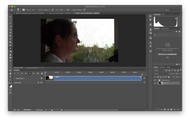
Left: my original footage.
Right: the selected section reversed in iMovie
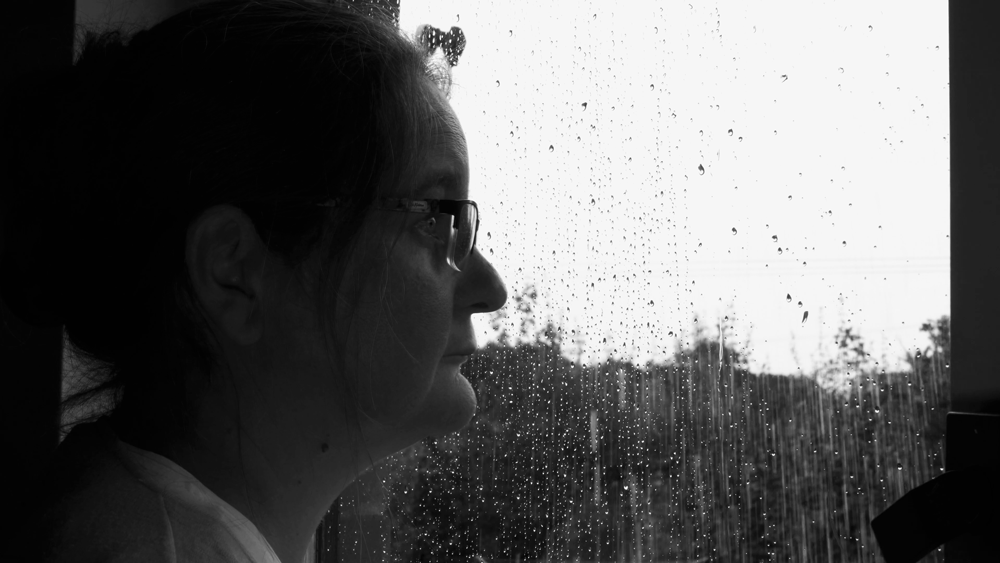
Overall I don't feel that this piece worked as well as I'd hoped. In my first attempt at producing a cinemagraph I had planned to create a juxtaposition between reality and fantasy through the slight alteration of an ordinary scene. My idea in this instance was to have someone stare out of a window at the rain - a seemingly normal occurrence, yet in this case the rain flows in reverse, retreating back up to the sky.
Unfortunately there was a distinct lack of rain when I conducted my shoot and therefore I had to produce my own. It is hence that the downpour does not appear as natural as I would like, with the stream swinging from side to side. I did however manage to incorporate several drops of water falling down the glass which helped to make the scene appear mildly more authentic. These droplets also helped to assimilate the atmosphere of confusion as the flow of the rain was too fast to be able to effectively pick out that it is in fact flowing in reverse. The droplets travel much slower and therefore their direction of travel is far more obvious. However the drops make up such a small portion of the image that the effect is not nearly as striking as I'd hoped. Though my original plan was to make the reversed flow a background feature that takes a while to fully comprehend, I feel that in this instance the effect is too subtle to create any sort of juxtaposition.
Compositionally, I like this image with the model taking up just over a third of the image, making her a strong factor, yet not covering so much of the frame that she becomes overly dominant in the image. There is still a large amount of negative space to balance the image. I would have liked perhaps for the model to be further toward the back of the frame, excluding the lighter areas of the interior of the room that are visible behind her head. However these areas do produce a colour counterchange with the small lighter areas on the left marrying withe the larger white area on the right, alongside the smaller black area on the right and the larger dark area on the left. This technique does help to make the image slightly more interesting, drawing the viewer's eye, yet the actual image is not up to the standard I would have liked.
The focus should be on the model, keeping her pin sharp with the rain more blurred in the background, but it is clear that the model's face is not quite in focus, making her much less noteworthy in the image. The image also looks rather flat due to a lack of contrast of the highlights and shadows. This may be as a result of my poor lighting of the shot, having used only one continuous light source to illuminate the model whilst the other was placed outside to highlight the rain so that the camera could better pick it up. I feel that I should have used a stronger light source for the model, therefore allowing me to properly expose the image.
I plan to re-attempt this shoot, though this time placing more emphasis on the water droplets so that the reverse flow is more obvious and there is a stronger juxtaposition. To do this I will most likely crop the shot tighter to the face of the model and use a short key light set up with a rim light to add drama to the image and make it more striking to the viewer.

I feel that my idea for my cinemagraph is quite film noir-esque with the large volume of shadow and tight crop. The 'staring at the rain through the window' shot is rather common throughout the film noir genre and through into modern television. This allows me to create a stronger juxtaposition as we are so accustomed to this type of shot that we think nothing of it, therefore when I add the reverse rain, it will contrast with the scene we are so comfortable with and thus produce an atmosphere of unease.
Still from "Woman in the window'" - 1944
Directed by - Fritz Lang
Cinematography by - Milton Krasner
Attempt 2
For my second attempt at this shoot, I took into consideration the faults of my previous attempt and decided to focus more on the motion of the droplets of water on the window.
To do this I used a tighter cropped scene and a shallower depth of field.
 |
|---|
 |
For my shoot, I set up a two continuous light sources - one in front of the model to light her face, and one behind to rim light her. Unfortunately the rim lighting was not as effective as I had hoped, largely due to the brightness of the sun through the window.
Due to restricted access to the outside of the window, I placed the water droplets on the inside at first just by using my hand to flick water at the glass before each shot, then I used an assistant to use a spray bottle to add the water continuously to the window which was far more effective.
I wanted to use an aperture of around F4 to draw focus to the model's face and have the water droplets slightly out of focus in order to disguise the lack or rain outside of the window. However due to the extreme natural light I was only able to achieve an aperture of F8 even with an ISO of 50, meaning that more of the image was in focus than I would have liked.
Left: The original footage
Right: The reversed, edited footage
Due to the brightness of the natural light, the footage appeared far too warm and merry to produce a dramatic atmosphere and thus I converted it to a high contrast black and white in iMovie when I reversed the video. The high contrast black and white somewhat disguised the warmth and light of the sun, but not enough to create the film noir-esque ambience that I had hoped for.
 |  |
|---|---|
 |

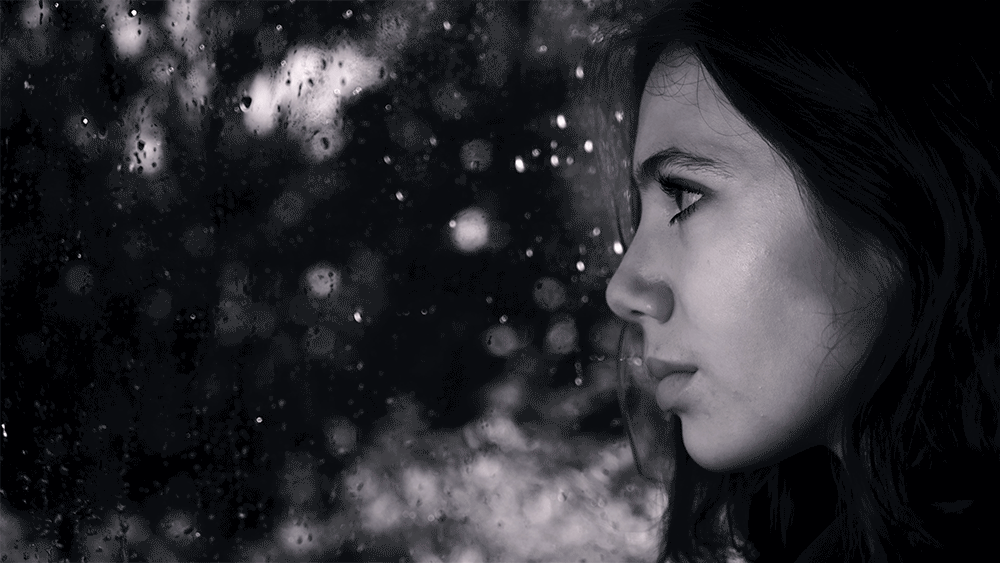
Sadly it is evident in this cinemagraph that the tripod I used was not quite as stable as I had first thought, thus leading to an effect similar to that of my test cinemagraph. Where I had masked out the still image to expose the motion underneath, the movement of the entire footage is emphasised due to the stationary model.
The droplets work incredibly well in this image however, and I am pleased with the overlay of the footage as there are no obvious jumps indicating the start of the loop. It is possible to spot the end of the loop where some of the droplets that have not quite made it out of the frame seem to just vanish, however I quite like this effect as the smooth change in opacity leading to this helps to produce a sense of mystery that is in-keeping with the theme of the piece.
Unfortunately in my attempt to decrease the file size, my changing of the image dimensions for the export led to the production of a lower resolution image.
Though there is a nice tonality to the face of the model in the original footage, the warmth of the natural light sets the mood as far too joyful for my dramatic intention. The conversion to high contrast black and white helps to disguise the warmth, but the way the light flows through the leaves beyond remains a strong indicator of the time of day, thus again diminishing the sense of drama.
I would hence like to repeat this shoot without the presence of such strong natural light in order to better achieve the 'film noir' effect I had hoped for so that I am able to create more climactic footage to emphasise the surrealistic motion of the water droplets and thus produce an overall more striking cinemagraph.
Attempt 3
Taking into account my successes and failures from my previous attempt, I again used a tight crop and focused on capturing the falling of the rain droplets.
This time however, I took a closer look at the scene from 'The woman in the window' from previously and noted the reflection of the woman's face. This was as a result of the darkness of the night behind the window transforming it into a mirrored surface. I decided to incorporate this into my image, but rather than waiting until nighttime, I chose to use a genuine mirror.
 |
|---|
 |
 |
For this shoot, I originally used the same lighting set up as my prior attempt - one light on the face and one rim light behind the subject - but abandoned this for a simpler set up with both light sources being used to illuminate the face, helping to make the reflected face more pronounced in the image.
Again I used the spray bottle in order to produce the water droplets, however due to the texture of the mirror, the droplets slid as thick lines of water rather than individual beads. Fortunately, the flow was still visible within the footage and so it was possible to show the reversed motion within my cinemagraph.
Left: the original footage
Right: the reversed, high contrast black and white footage
In terms of editing, I again used iMovie to create a high contrast black and white filter for my footage, helping to emanate a film noir level of drama in my resulting cinemagraph. I increased the overall contrast, but dropped the highlights and lifted the shadows in order to gain a small amount of clarity back in the darker areas such as the hairline and avoid any highlight clipping on the face.
 |  |
|---|---|
 |
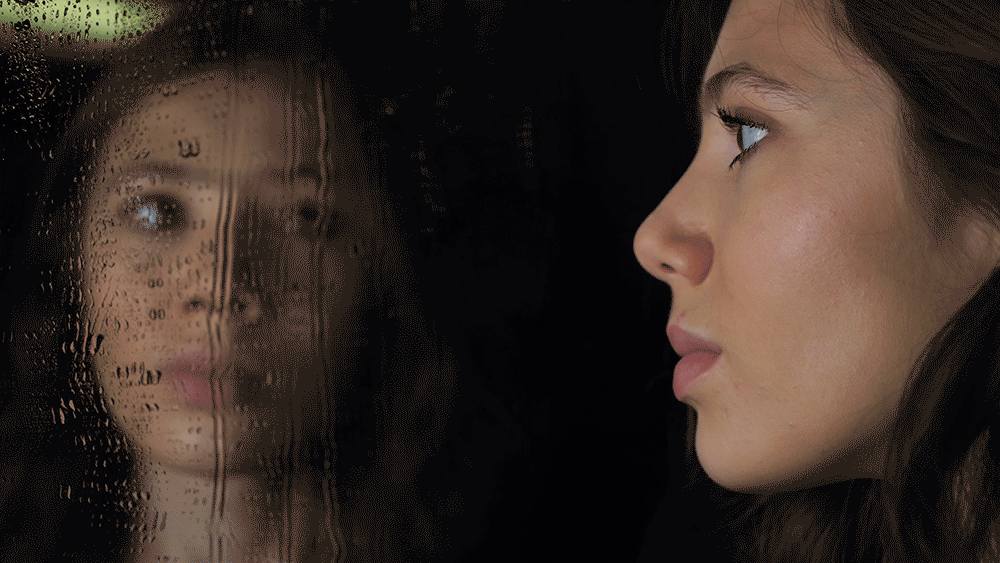
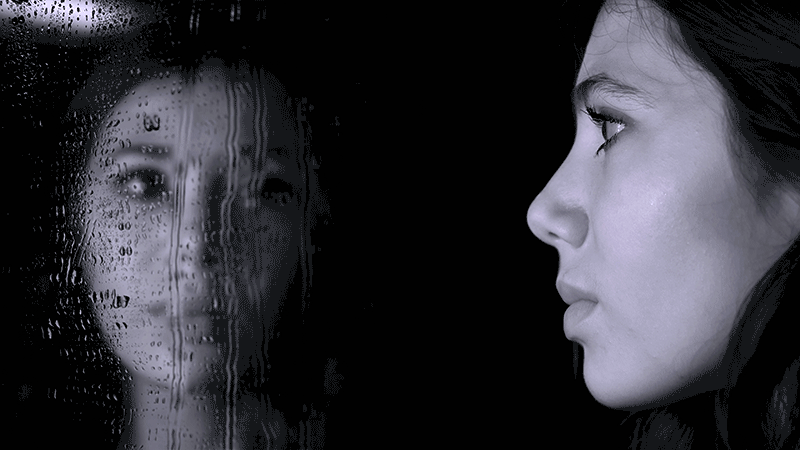
My third attempt was my most successful. Having used a mirror rather than a window and a more sturdy tripod, I was able finally to produce footage in a film noir style to produce a dramatic cinemagraph.
Despite my best intentions, there were still some slight issues with my final footage. For instance, the water on the mirror became more of a series of small streams running down the glass rather than well defined droplets. Additionally, I had not used any form of support for the model to rest on and as she was standing there was a considerable amount of movement of her head. Fortunately, there was enough of a droplet to be able to see the direction of the motion of the water, and the movement of the face below the still image (uncovered when I masked out the still) actually adds another layer of confusion which I feel helps to create a greater sense of unease within the image, therefore making it more eye-catching.
The use of water in reverse in this image creates such a sense of unrest due to the corruption of two robust constants - gravity and purity. In terms of gravity, it is common knowledge that this force is what causes all things to stay touching the surface. The story of Newton and the apple is drilled into us from a young age and thus it is natural to us that all things fall towards the Earth. However in this image, gravity is reversed. The water flows upwards toward the sky. Such an event goes against the natural order, thus initiating an atmosphere of distress. This distress is heightened when we consider that since the Egyptian times the symbolism of water has been of purity and life. Therefore the running in reverse is unnatural to the point of tainting this symbol. It is hence that this image upsets the balance and questions reality.
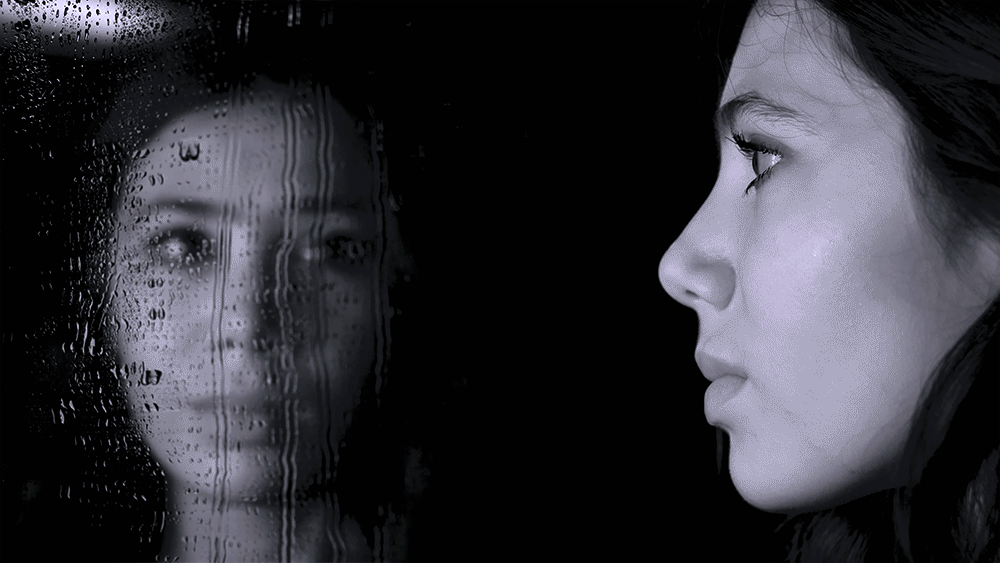
Of the two final images, I preferred the black and white. I feel that this helps to create tension in the image and the lack of colour distracts less from the motion of the water on the mirror. The fact that the focus is on the face of the model draws the eye to this point, but the addition of movement re-directs the attention to this area.
I decided to further incorporate the motion of the model's reflected face in the image and I thus make out all of this area in the still, allowing the turning of the head and the blinking to feature juxtaposing the stationary face on the right of the frame. The moving reflection creates an atmosphere of anxiety reminiscent of the work of Francesca Woodman.

'Polka dots' by Francesca Woodman - 1975-76





